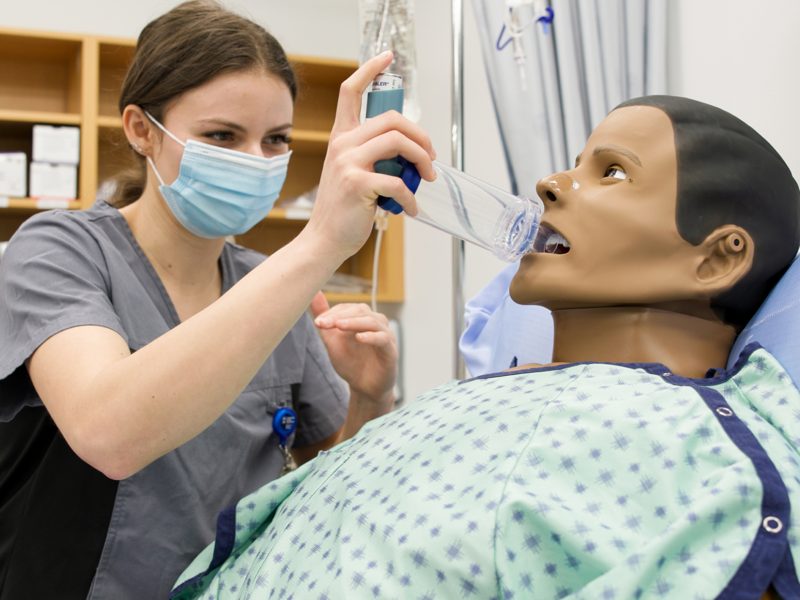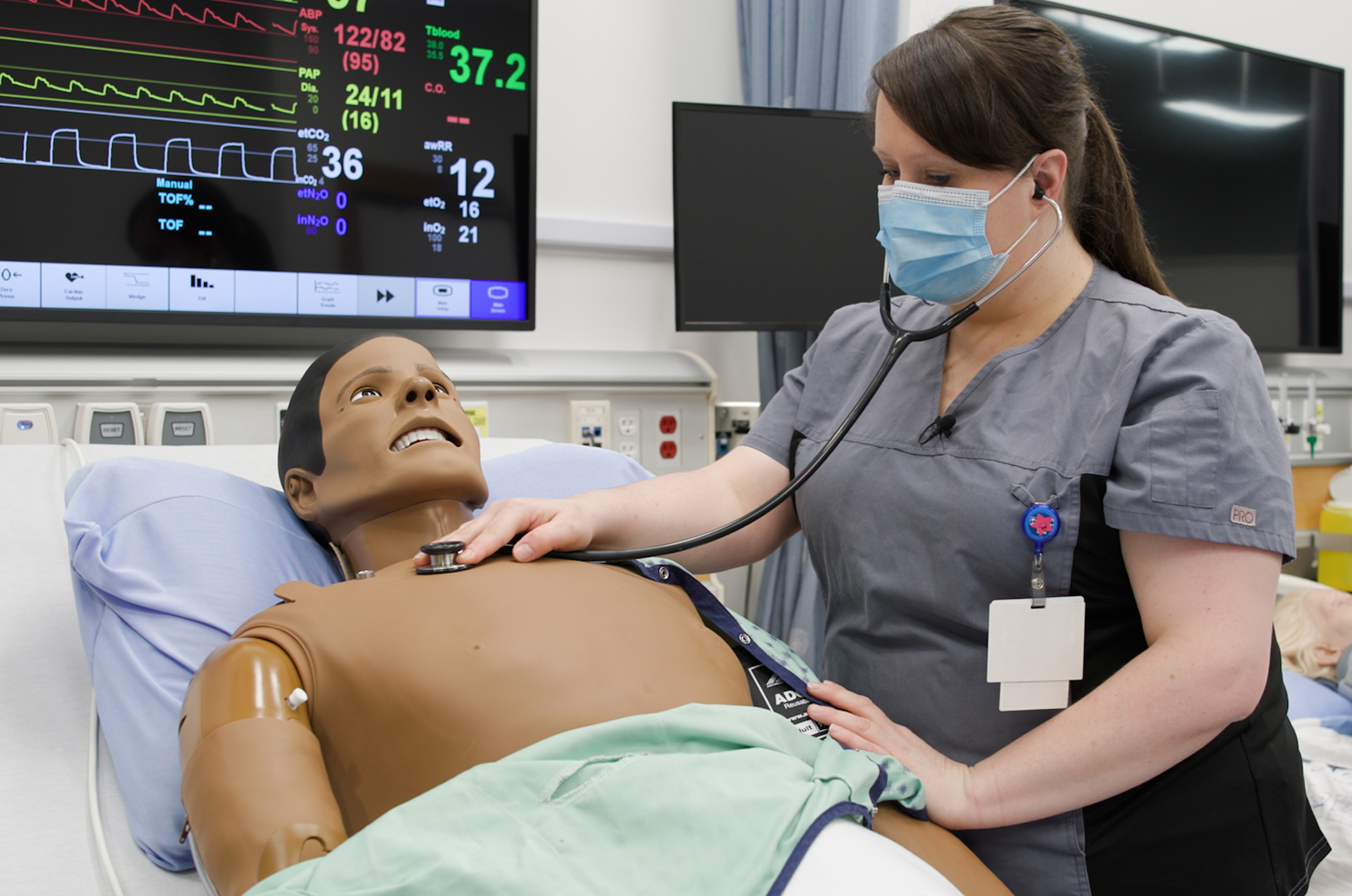
TRU’s new Sherman Jen Simulation Centre creates an environment to better prepare Bachelor of Science in Nursing students to enter a real clinical setting.
The patient simulation labs opened in September 2020 and are equipped with computerized manikins and technology that replicates hospitals and laboratories. The labs are an innovative, cohesive learning space that improves the quality of students’ education.
“Computerized manikins — they are the difference. When you look at how we taught students before, we taught them theory, then we taught skills and then we’d take them to the hospital and get them to put everything together. We still teach all the theory and skills, but now they can do it over and over again so that the practice becomes muscle memory. They’re not trying to put it together in a hospital, they’re already able to do it. It makes a huge difference,” says Wendy McKenzie, senior lecturer.
“When we’re doing simulations, it’s really a non-stressful time with no pressure. You’re in a small group with an instructor, and you can take time to think it through. It kind of gives you those skills before you even go into a hospital setting or a clinical setting,” says nursing student Christine Skirrow.

Nursing student Christine Skirrow listens to manikin’s breath and lung sounds.
Interprofessional simulation training
The World Health Organization notes that interprofessional education opportunities such as the simulation training at TRU allows health-care professionals to learn about, from and with each other to enhance collaboration and improve health outcomes.
So while the simulation technology is primarily used for training frontline workers, respiratory therapist (RT) students have also received upgraded diagnostic equipment. Nine pulmonary-function stations allow them to measure how well a patient’s lungs take in and release air, how well they move gases into the body’s circulation and whether treatment will work.
Earlier this year, RT and nursing students participated in a successful pilot project for an interprofessional simulation training session. This interprofessional approach to education models more closely what students will experience in a real clinical setting, where health-care staff work across disciplines or specialties.
The key advantage of learning with computerized manikins or simulators is that they can often reproduce physiological responses that otherwise can’t be replicated. They can add to the realism of a situation and play a role in creating a safe environment where students can learn and patients are not at risk.
While computerized manikins have limitations, there is growing evidence that the use of simulation technology enhances the learning experience by increasing student confidence, knowledge and skill.

 Student's killer on parole
Student's killer on parole Charges after investigation
Charges after investigation Hostage was on captor
Hostage was on captor  Regulating power prices
Regulating power prices Gen X is raking it in
Gen X is raking it in LeBlanc laying groundwork
LeBlanc laying groundwork US vetoes UN resolution
US vetoes UN resolution $100M Nassar settlement
$100M Nassar settlement 12 Trump jurors picked
12 Trump jurors picked Rates slow green economy
Rates slow green economy Vicinity hires president,
Vicinity hires president, Record housing starts
Record housing starts Warriors ready for Round 2
Warriors ready for Round 2 Kalamalka Bowl cancelled
Kalamalka Bowl cancelled Rockets live to fight on
Rockets live to fight on Rihanna's parenting ‘hack’
Rihanna's parenting ‘hack’ Tarantino scraps film
Tarantino scraps film Munn talks cancer battle
Munn talks cancer battle




